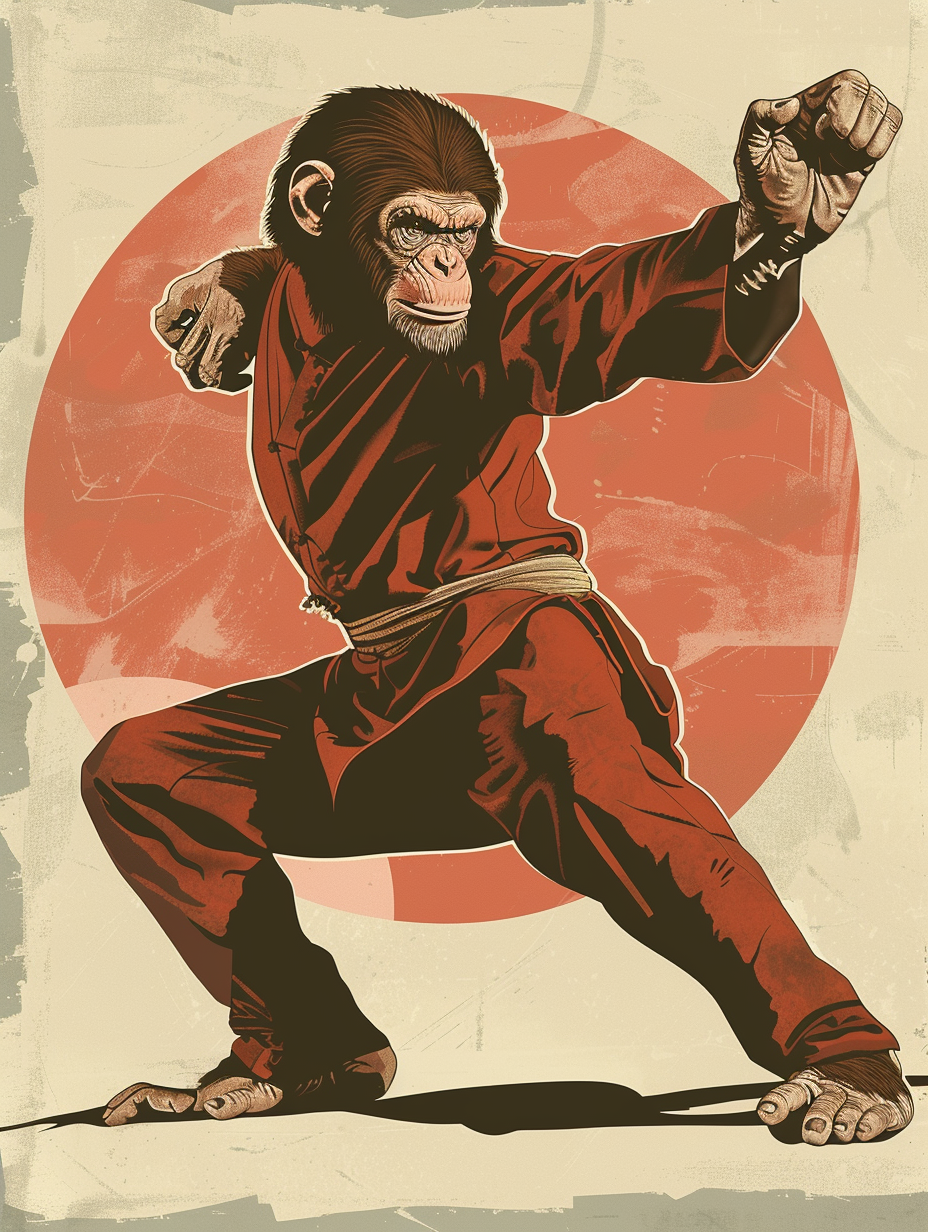Sora and the Dao of Machine Learning
Musings about artificial intelligence, neuroscience and my journey in martial parts
A Planet of the Apes-style monkey learning kung fu“We copy the move so we can understand the feeling. Once we understand the feeling, we can sense the rules and principles of everything.”
That was a conclusion of my last chat with one of my jiu jitsu coaches. A conversation that started on how to sharpen my method to learn how to fight, dove into Daoist principles, took tangents in neuroscience (it’s not because I publish my book that I can’t continue to geek out on these themes) and after an exhausting class and a night well slept, I wake up to the same theme again. This time, in the field of artificial intelligence.
The article started discussing the imperfect but quickly evolving ability of AI to simulate reality without fully understanding it. A debate that has been going on for a while, but got a new life based on the impressive results from OpenAI’s new text to video technology, which they called Sora.
Impressive was an understatement actually. The tech’s ability to simulate physics — the behaviors of liquids, hair, reflections, animals… — is mind blowing. Especially because we know it doesn’t really understand any of that. It doesn’t understand gravity, waves, it can’t really grasps concepts.
Critics of the field have been quick to dismiss these advancements as superficial and untrue. These machines don’t really understand what they’re saying or doing. They’re just performing spectacular tricks of statistics.
Well, that’s how all mammals learn too. We try things. Play. Learn consequences and develop a feeling about how the world operates. Then We are ready. A kid doesn’t need to understand gravity to be able to know things fall. They don’t need to understand our nervous system to understand falling hurts. We just experience it and the experience develops a feeling that in most cases is good enough to live our lives.
In fact, sometimes a deeper understanding can be so overwhelming it it’s counterproductive. Going back to the beginning, Daoist monks from China say words are like traps, ideas are like hares. You need the trap to catch the hare, but once you have it, you don’t need the trap (or the words) anymore.
Like my coach said, and I heard from neuroscientists so many times, those “feelings” we develop, the thoughts processed in the non-verbal parts of our brain, are often deeper and faster than the ones we process to language.
That’s the part fighters use in their battles. Any athlete, in fact. And that’s a similar to how computers have been learning our world too.
Even if just metaphorically.
